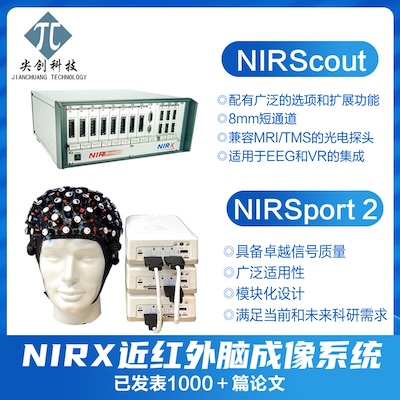Is NIRS able to measure signal from deep brain structure, such as amygdala? The short answer is no. NIRS is only able to measure the surface of the brain. This is a serious limitation of NIRS compared to fMRI which is able to measure the entire brain.
However, brain is a highly connected network. Deep brain is not isolated from the surface. So maybe we can infer the deep brain activity based on the surface. And this is exactly what we have done.
In a recent publication titled “Inferring deep-brain activity from cortical activity using functional near-infrared spectroscopy”, we used concurrent fMRI-NIRS technology to measure both deep and surface brain activity and explored the possibility to infer deep brain based on surface brain activity measure by NIRS. The result is very encouraging – we are able to infer deep brain from surface activity (correlation ~0.7).
This paper is published in Biomedical Optics Express with Dr Ning Liu, a NIRS expert, as the first author. You can find the paper at http://www.opticsinfobase.org/boe/fulltext.cfm?uri=boe-6-3-1074&id=312512
Abstract:
Functional near-infrared spectroscopy (fNIRS) is an increasingly popular technology for studying brain function because it is non-invasive, non-irradiating and relatively inexpensive. Further, fNIRS potentially allows measurement of hemodynamic activity with high temporal resolution (milliseconds) and in naturalistic settings. However, in comparison with other imaging modalities, namely fMRI, fNIRS has a significant drawback: limited sensitivity to hemodynamic changes in deep-brain regions. To overcome this limitation, we developed a computational method to infer deep-brain activity using fNIRS measurements of cortical activity. Using simultaneous fNIRS and fMRI, we measured brain activity in 17 participants as they completed three cognitive tasks. A support vector regression (SVR) learning algorithm was used to predict activity in twelve deep-brain regions using information from surface fNIRS measurements. We compared these predictions against actual fMRI-measured activity using Pearson’s correlation to quantify prediction performance. To provide a benchmark for comparison, we also used fMRI measurements of cortical activity to infer deep-brain activity. When using fMRI-measured activity from the entire cortex, we were able to predict deep-brain activity in the fusiform cortex with an average correlation coefficient of 0.80 and in all deep-brain regions with an average correlation coefficient of 0.67. The top 15% of predictions using fNIRS signal achieved an accuracy of 0.7. To our knowledge, this study is the first to investigate the feasibility of using cortical activity to infer deep-brain activity. This new method has the potential to extend fNIRS applications in cognitive and clinical neuroscience research.


